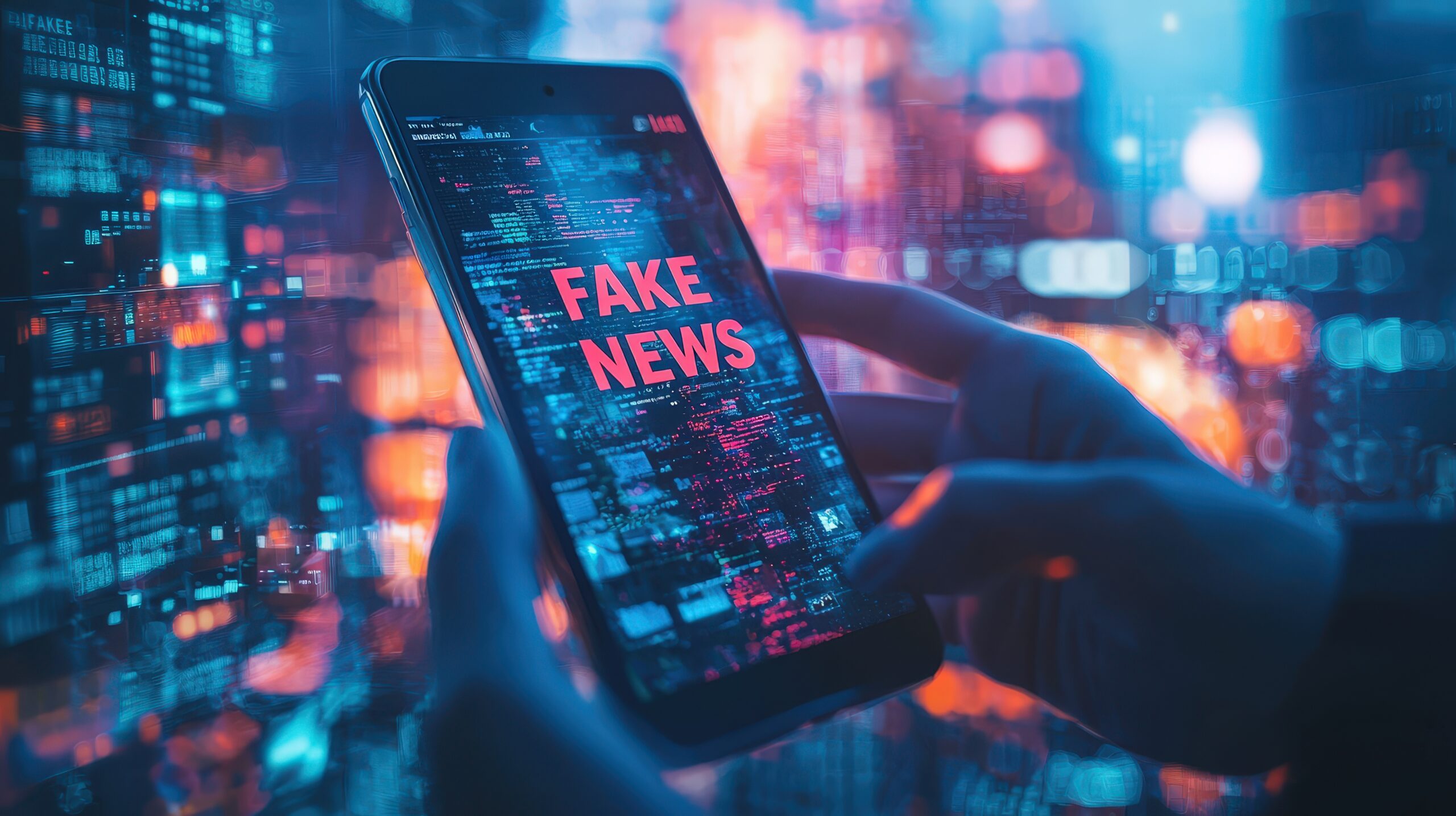How can we detect misinformation before it spreads and influences public opinion? Why does misinformation thrive so easily on social media and private messaging platforms? What cognitive biases make us more susceptible to believing misinformation, even when we try to stay informed?
In today’s hyperconnected world, we are surrounded by an overwhelming amount of information, but not all of it is trustworthy. This blog dives deep into the critical skills needed to spot misinformation in the digital age. It explores how fake news mimics real journalism, thrives on sensational headlines, and spreads quickly across social media platforms, forums, and private groups. With tools like reverse image searches, fact-checking websites, and cross-referencing credible sources, readers can guard themselves against falling victim to misinformation.
Beyond technological tactics, the blog addresses the psychological aspects that make us vulnerable to misinformation, such as confirmation bias and emotional reasoning. It also highlights how algorithms and AI contribute to spreading fake news, while offering strategies to build robust media literacy skills. By developing healthy skepticism and critical evaluation techniques, individuals can navigate today’s complex information landscape and uphold truth in an era where misinformation can easily dominate the narrative.
We’re living in a hyperconnected world, where information is abundant and accessible within seconds at the simple press of a button.
This never-ending fountain of data and information, particularly on the internet, coupled with the widespread use of smartphones and other mobile technology, makes it so that a few quick searches can almost instantly answer any question we have. We can connect with people around the globe, crossing borders and oceans in mere minutes. There has never been a moment in time when we were as connected and educated as we are right now.
However, this abundance of information is a paradox: the more information we have, the harder it becomes to determine what’s real and what’s fake.
By now, we’ve all heard the phrase “fake news,” particularly as major world events, from recent presidential elections to the COVID-19 pandemic, have tested the public’s reception of information from various sources. It’s become a pervasive issue, influencing public opinion, sowing discord, and undermining trust in institutions, from news outlets to universities and even government agencies.
When left unchecked, misinformation can have serious consequences and cause significant harm, but keeping it in check is challenging as it spreads like wildfire in the digital age. News moves fast on the internet and social media, whether accurate or not. This is why learning to identify misinformation is such a critical skill in the information age, whether you’re a data scientist, journalist, or an everyday news consumer.
In this blog, we’ll explore the characteristics of fake news, the platforms where it thrives, tools for detection, and strategies to build greater media literacy.
Table of Contents:
- Sensational Headlines & Emotional Language
- Lack of Credible Sources or Citations
- Altered Images or Videos
- Clickbait & Misleading URLs
Common Platforms Where Misinformation Thrives
Tools & Techniques for Detecting Fake News
- Reverse Image Search
- Fact-Checking Websites
- Source Verification
- Cross-Referencing Stories
- Analyzing Writing Style & Bias
Cognitive Biases That Influence Belief in Fake News
- Recommendation Algorithms
- Deepfakes & AI-Generated Content
- Platform Efforts to Flag or Suppress Fake News
Building Media Literacy Skills
- Question & Evaluate Content Critically
- Recognize Persuasive Techniques & Misleading Content
- Practice & Develop Healthy Skepticism
Characteristics of Fake News
To some people, particularly those with a background in media and journalism, spotting misinformation may feel easy. However, not everyone has a trained eye or the background knowledge to recognize sensationalism when they see it.
There isn’t a one-size-fits-all approach to fake news, either. It’s actually very nuanced and comes in a variety of styles. Whether it be clickbait, propaganda, poor-quality journalism, misleading headlines, or satirical content, there’s an array of material to be wary of.
Fake news is deceptive by nature. It often mimics legitimate news but lacks the journalistic integrity and standards that ensure accuracy and accountability. That said, there are ways to recognize fake news by learning some of the telltale signs of false information:
- Sensational Headlines & Emotional Language
- Lack of Credible Sources or Citations
- Altered Images or Videos
- Clickbait & Misleading URLs
1. Sensational Headlines & Emotional Language
Fake stories often lead with exaggerated, inflammatory headlines designed to provoke an emotional reaction. Fear, anger, or shock are some of the most common hooks that generate the most clicks and shares. In general, if it sounds too outrageous to be true, it probably is—or at the very least, deserves a second look.
2. Lack of Credible Sources or Citations
Legitimate journalism is grounded in evidence and thorough research. Misinformation rarely links to the original sources or relies on vague “experts say” language without actually backing up any of the claims. When citations are missing or the sources are untraceable, that’s a serious red flag.
3. Altered Images or Videos
Visual content can be manipulated or taken out of context to support false narratives. Especially as AI has become widely accessible and more sophisticated, deepfakes, Photoshop edits, or videos stripped of their original source can be convincing if we’re not paying close attention.
4. Clickbait & Misleading URLs
Sites posing as legitimate news organizations often use URLs that mimic trusted outlets to get you to visit and see the site as a legitimate source. They rely on clickbait—content crafted solely to attract clicks and ad revenue rather than inform.
Common Platforms Where Misinformation Thrives
Unfortunately, misinformation doesn’t appear once and then disappear forever. Instead, it spreads and can stick around in the news cycle and culture at large for a long time, as it’s difficult to convince people that what they saw wasn’t real or accurate.
Moreover, the digital age is ripe with opportunities for fake news to flourish. Some websites are intentionally designed to mimic the look and feel of reputable news outlets. Still, instead of real information, they’re full of fake news, clickbait, and propaganda. These sites are created to take advantage of the consumer’s sense of familiarity and the skim-reading habits we all have, hoping we won’t double-check the validity of the information and then share it with our friends, family, and followers.
Fake news sites aren’t the only places where misinformation lives, though. There are several other common places to keep an eye out for questionable content:
- Social Media Platforms
- Messaging Apps & Private Groups
- Forums & Discussion Boards
1. Social Media Platforms
Facebook, X (formerly known as Twitter), Instagram, and TikTok are fertile ground for viral misinformation. Algorithms prioritize engagement, not accuracy. This means the most emotionally charged or sensational content often gets amplified the fastest. Plus, anyone can share anything they want on their social media platform with very minimal checks and balances in place, making it incredibly easy for fake news to spread.
2. Messaging Apps & Private Groups
Encrypted apps like WhatsApp and Telegram enable private or closed group sharing, often without moderation. Rumors and false claims can spread quickly under the radar, away from public scrutiny and questioning eyes.
3. Forums & Discussion Boards
Platforms like Reddit, 4chan, and niche interest groups can be echo chambers where misinformation flourishes, much like your close group of friends who all share similar beliefs and opinions. Here, unchecked claims gain traction when repeated by a community that wants to believe them, and it becomes extremely difficult to penetrate the group culture and challenge the information they believe to be true.
Tools & Techniques for Detecting Fake News
Identifying and combating misinformation on your own, solely based on your gut instinct, can be tricky and exhausting. Fortunately, a variety of tools and techniques can help you assess the accuracy of what you’re seeing online and improve your ability to spot the difference between real and fake news confidently.
- Reverse Image Search
- Fact-Checking Websites
- Source Verification
- Cross-Referencing Stories
- Analyzing Writing Style & Bias
1. Reverse Image Search
Use tools like Google Reverse Image Search to check if an image has been used before in another context. This technique is famously used in nearly every episode of the MTV hit series “Catfish.” It’s one of the quickest ways to spot reused or manipulated visuals.
2. Fact-Checking Websites
Websites like Snopes, PolitiFact, and FactCheck.org exist to verify or debunk widely circulated claims. In your quest to combat misinformation and improve your media literacy, it’s a great idea to bookmark these tools and use them as often as possible.
3. Source Verification
If a story links to a source, click through. Is it a real report or a dead link? Who published it? Is it peer-reviewed, journalistically credible, or from an unknown blog with no transparency? Asking these questions can help you verify the validity of the source to determine whether the claims in the article you’re reading are trustworthy or possibly fabricated.
4. Cross-Referencing Stories
Check if multiple reputable news outlets are reporting the same story. If the story only appears on one obscure site or in ideologically extreme circles, it may not be accurate, or at least not fully reported. Much like you seek a second opinion from doctors or contractors, consider taking the same approach with the news and information you consume.
5. Analyzing Writing Style & Bias
Is the article heavily opinionated, full of all-caps, excessive punctuation, or emotionally charged words? These cues often point toward bias or manipulation rather than balanced reporting. Comparing the writing on sites like these to that of trusted news outlets with editorial standards guiding their work is a good way to identify biased writing, or at least content that is dubious at best.
Cognitive Biases That Influence Belief in Fake News
Misinformation is about far more than the characteristics that define it and the technology that spreads it. There’s also a psychological aspect to spreading and accepting fake news. Unfortunately, we’re all vulnerable to various cognitive biases—even the most well-intentioned and media-literate consumers—that impact our ability to identify fake news and determine what we can and can’t trust.
Several cognitive biases influence our belief in fake news, from confirmation bias to others, and it’s important to be aware of them. Understanding these biases helps us build a more intentional filter. It’s not about feeling guilty for having bias—it’s about being aware of it and checking in with ourselves before we click “share.”
- Confirmation Bias
- Illusory Truth Effect
- Emotional Reasoning
- Groupthink & Echo Chambers
1. Confirmation Bias
We tend to seek information that aligns with our existing beliefs and ignore or discredit what doesn’t. That’s the core of the confirmation bias. Misinformation thrives when it validates our worldview, even if it’s objectively false.
2. Illusory Truth Effect
The illusory truth effect is an interesting phenomenon. The more we’re exposed to a claim, regardless of its truth, the more likely we are to believe it. Repetition breeds familiarity, and familiarity breeds perceived truth, whether right or not.
3. Emotional Reasoning
If something makes us feel strongly, we may bypass logic. Misinformation often targets emotions precisely because it shortcuts rational thinking. We all have an emotional side that can make us vulnerable and let our guard down, and the best fake news curators know how to take advantage of that.
4. Groupthink & Echo Chambers
Challenging the prevailing narrative can feel risky in tight-knit communities or online groups. We may conform to the group’s belief system even when the facts say otherwise. This is most commonly seen in echo chambers like SubReddits and other groups.
The Role of Algorithms & AI
Technology—the internet, social media, etc.—is the vessel that helps misinformation spread, but it’s not a neutral party in the issue. The systems and algorithms we rely on to filter content to our preferences shape what we see and what we don’t. While our engagement certainly plays a part, our feed is dictated by each platform’s algorithm, which can sometimes feel quite arbitrary. Yet, both algorithms and artificial intelligence have a part to play in the transfer of fake news.
- Recommendation Algorithms
- Deepfakes & AI-Generated Content
- Platform Efforts to Flag or Suppress Fake News
1. Recommendation Algorithms
Social media platforms use engagement-based algorithms to show users more of what they interact with. That means the more you like or comment on emotionally charged content, even if you disagree with it, the more you’ll see similar content. Misinformation, especially sensational or polarizing content, gets boosted as a result.
2. Deepfakes & AI-Generated Content
With the increased accessibility to various AI tools and their increasing sophistication and abilities, the line between real and fake is blurring. AI can now generate realistic videos called deepfakes, clone voices, and write articles that appear human-made. As AI advances, it’s getting harder and harder to tell the difference between human and robot-generated content. This makes misinformation harder to detect and easier to distribute at scale.
3. Platform Efforts to Flag or Suppress Fake News
To combat misinformation, platforms are experimenting with warning labels, content moderation, and partnerships with fact-checkers. While these steps help, they’re not foolproof, and often spark debates about free speech and censorship, as seen in the constant debates surrounding platforms like X and the Meta brands Facebook and Instagram.
Building Media Literacy Skills
According to data from the Pew Research Center and insights from the National Center for State Courts, 64% of adults said fake news has caused them to be confused about basic facts, and 23% said they’ve shared fake news either knowingly or unknowingly.
Misinformation isn’t going anywhere, but our ability to recognize it can absolutely improve. As digital citizens, it’s up to us to understand the content and the systems that deliver it. We can’t rely on platforms alone to make those decisions for us.
At its core, media literacy is about asking better questions, and there are steps we can all take to build better media literacy skills:
- Question & Evaluate Content Critically
- Recognize Persuasive Techniques & Misleading Content
- Practice & Develop Healthy Skepticism
1. Question & Evaluate Content Critically
Who created this content and why? What’s the source? What’s missing? Asking these questions turns us from passive consumers into active participants in shaping our understanding. Always consider the source, purpose, and evidence behind the information presented. Don’t be afraid to research things yourself, fact-check, and seek a second source.
2. Recognize Persuasive Techniques & Misleading Content
Look for emotional baits, repetition, cherry-picked data, or appeals to fear. These techniques are often used to manipulate rather than inform. Be aware of tactics like fear-mongering, sensationalism, and emotional baiting of any kind, whether it’s content that tugs at your heartstrings or makes you angry.
3. Practice & Develop Healthy Skepticism
Skepticism isn’t cynicism. It’s the art of pausing, investigating, and holding information to the light before accepting it as truth. It’s about keeping your curiosity alive while protecting your discernment. You should maintain a questioning attitude while remaining open to credible information.
Conclusion
We live in a time where misinformation can go viral faster than the truth. With the fast-paced nature of social media and the internet, it’s up to us to build up our skills of discernment and media literacy to ensure we’re not being fooled or taken advantage of by algorithms or bad actors.
It’s important to stay curious, thoughtful, aware of our biases, and willing to question the validity of the information we see online or even what we hear from our peers, friends, and families daily.
This isn’t about becoming a cynic and questioning everything you hear or read. Rather, it’s about building a culture of integrity, where truth matters and prevails, and critical thinking is celebrated. In the digital age, media literacy is becoming less of a luxury or industry-specific skill and more of a civic duty.








